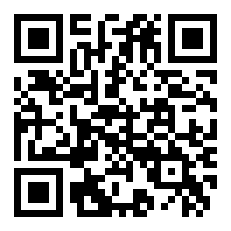An Algorithm to Convert Optical Coherence Tomography Central Corneal Thickness Values to Ultrasound Central Corneal Thickness Values and its Corresponding Correction Factor
Keywords:
Algorithm, Convert, Central Corneal Thickness, Ultrasound Pachymetry, Optical Coherent TomographyAbstract
Background: Measuring Central Corneal Thickness (CCT) using Optical Coherence Tomography (OCT) is more convenient for the
doctor and patient as compared to the Ultrasound (USS) measurement. OCT is a non-contact test, anesthetic drops are not used, there is no risk of abrasion or infection and the exact position of the central cornea is measured as OCT maps out the center. Nevertheless, OCT values have been found to be statistically significantly lower than the USS measures, 1-8 so both measures cannot be
interchanged. Hence an algorithm is needed to convert OCT values to USS values after which the relevant intraocular pressure (IOP) correction factor can be applied in patient management.
Aim: To develop an algorithm to convert OCT CCT values to USS CCT values and apply the corresponding correction factor.
References
Okudo AC, Babalola OE. Comparing Central Corneal Thickness using Ultrasound and Anterior Segment OCT Pachymetry in adults
attending a Private Eye clinic in Abuja. Submitted to NMJ
Ramesh PV, Jha KN, Srikanth K. Comparison of Central Corneal Thickness using Anterior Segment Optical Coherence Tomography
Versus Ultrasound Pachymetry. J Clin Diagn Res. 2017;11(8):NC08-NC11. doi:10.7860/ JCDR/2017/25595.10420
Northey LC, Gifford P, Boneham GC. Comparison of Topcon optical coherence tomography and ultrasound pachymetry. Optom Vis Sci 2012;89:1708-1714.
Babbar S, Martel MR, Martel JB .Comparison of central corneal thickness by ultrasound pachymetry, optical coherence tomography and specular microscopy. New Front Ophthalmol 2017; 3: DOI: 10.15761/NFO. 1000164
Garcia-Medina JJ, Garcia-Medina M, GarciaMaturana C, et al. Comparative study of central corneal thickness using Fourier-domain
optical coherence tomography versus ultrasound pachymetry in primary open angle glaucoma. Cornea 2013;32:9-13.
Vollmer L, Sowka J, Pizzimenti J, et al. Central corneal thickness measurements obtained with anterior segment spectral domain optical
coherence tomography compared to ultrasound pachymetry in healthy subjects. Optometry 2012; 83:167-172.
Pateras E, Kouroupaki, A. I. Comparison of Central Corneal Thickness Measurements between Angiovue Optical Coherence Tomography, Ultrasound Pachymetry and Ocular Biometry. Ophthalmology Research: An International Journal 2020; 13(4), 1-9. https://doi.org/10.9734/or/2020/v13i 430 172
Acar BT, Turan EV, Halili E ve ark. Merkezi kornea kalýnlýðý ölçümünde ultrasonik pakimetri ile optik koherens tomografinin
karþýlaþtýrýlmasý.MN Oftalmol 2011;18:142- 5.
Ehlers N, Bramsen T, Sperling S. Applanation tonometry and central corneal thickness. Acta Ophthalmol (Copenh). 1975; 53:34–43. [PubMed: 1172910]
Patwardhan AA, Khan M, Mollan SP, Haigh P. The importance of central corneal thickness measurements and decision making in general
ophthalmology clinics: a masked observational study. BMC Ophthalmol. 2008; 8:1. doi:10.1186/1471-2415-8-1
Kohlhaas M, Boehm AG, Spoerl E, et al. Effect of central corneal thickness, corneal curvature, and axial length on applanation tonometry.
Arch Ophthalmol. 2006; 124:471–6. [PubMed: 16606871]
Doughty MJ, Zaman ML. Human corneal thickness and its impact on intraocular pressure measures: a review and metaanalysis approach. Surv Ophthalmol. 2000; 44:367–408. [PubMed: 10734239]
Whitacre MM, Stein RA, Hassanein K. The effect of corneal thickness on applanation tonometry. Am J Ophthalmol. 1993; 115:592–
[PubMed: 8488910]
Orssengo GJ, Pye DC. Determination of the true intraocular pressure and modulus of elasticity of the human cornea in vivo. Bull Math Biol.
; 61:551–72. [PubMed: 17883231]
Iyamu E, Iyamu JE, Amadasun G. Central corneal thickness and axial length in an adult Nigerian population [Espesor central corneal
y longitud axial en una población nigeriana adulta]. J Optom. 2013;6(3):154-160. doi: 10. 1016/j.optom.2012.09.004
Mercieca K., Odogu V., Fiebai B., Arowolo O., Chukwuka F. Comparing central corneal thickness in Sub-Sahara cohort to African
Americans and Afro Caribbeans. Cornea. 2007;26:557–560. [PubMed] [Google Scholar]
Iyamu E., kio F., Idu F.K., Osedeme B. The relationship between central corneal thickness and intraocular pressure in adult Nigerians
without glaucoma. Sierra Leone J Biomed Res. 2010;2:95–102. [Google Scholar]
Babalola O.E., Kehinde A.V., Iloegbunam A.C., Akinbinu T., Moghalu C., Onuoha I. A comparison of Goldmann applanation and
non-contact (Keeler Pulsair EasyEye) tonometers and the effect of central corneal thickness in indigenous African Eyes. Ophthal Physiol Opt. 2009;29:182 186. [PubMed] [Google Scholar]
Iyamu E., Osuobeni E. Age, gender, corneal diameter, corneal curvature and central corneal Thickness in Nigerians with normal
intraocular pressure. J Optom. 2012;5:87– 97. [Google Scholar]


















